You haven’t lived until you’ve eaten eggs laid just a few minutes ago.
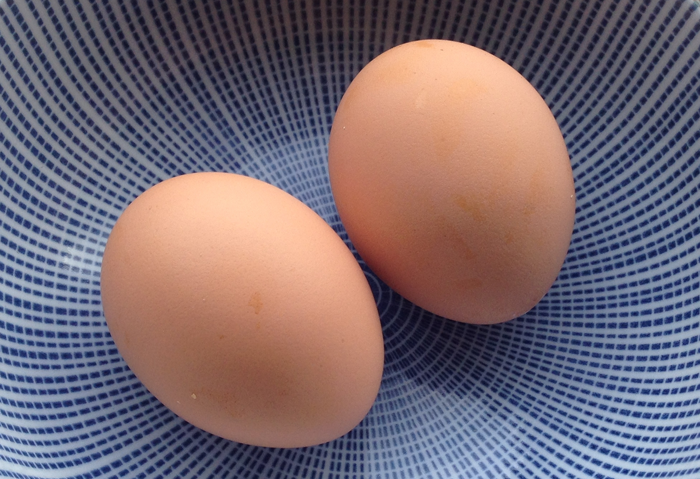
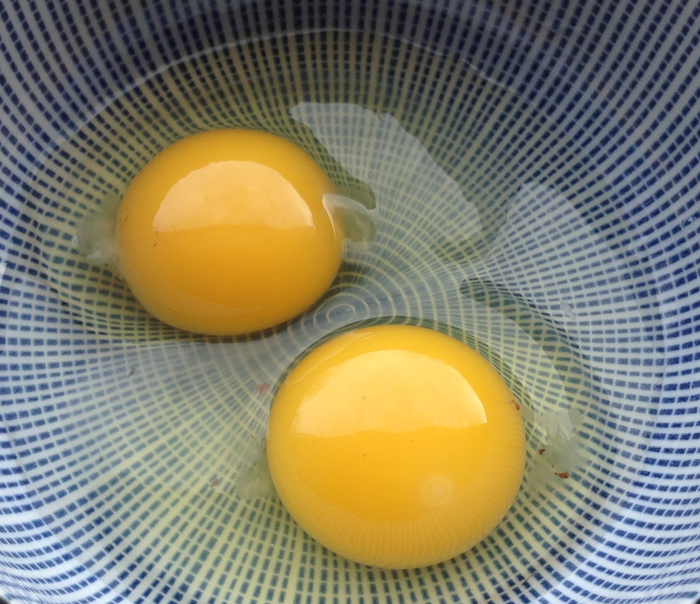
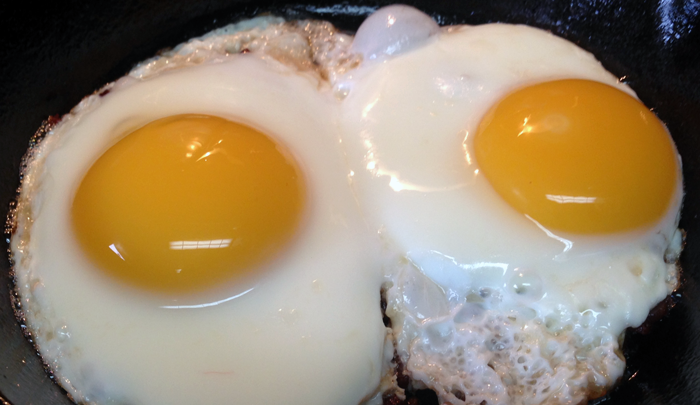
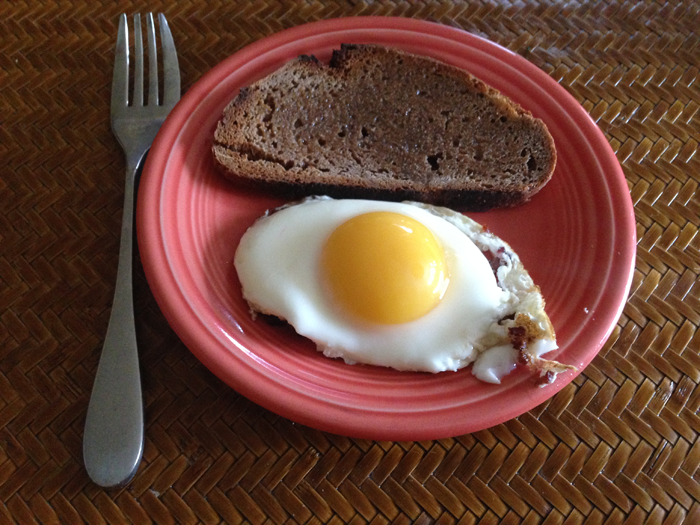

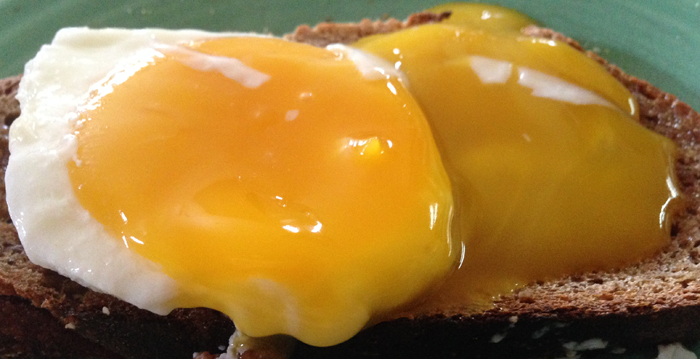
Month: March 2014
-
Fresh Eggs
-
Her Nest

Each hen has her favorite nesting spot. Some hens stick to using the same nest for months. Other hens switch nests daily, weekly, monthly. No two hens are exactly alike. In any case, I’ve never met a hen which did not like to move a lot every day. Not just a few steps, but huge distances. When you take into account their size in relation to a human’s, it would be like a human walking five to ten miles a day. Chickens are on the move much of the day, and cover vast distances in a short time.
So I wonder what happens to the mental state of a hen in a cage. She’s imprisoned and has to use the same spot day in and day out. Most hens in an egg laying operation don’t even have a nest. They are trapped in a metal cage with no straw, no bedding. Their feet only touch metal their whole lives. As soon as they lay their egg, it rolls out of the cage and is whisked away on a conveyer belt.
What is it like for a hen to live in a metal box her whole life and never experience nestling into a comfortable straw nest? What is it like to see her eggs go rolling away? My guess is that most hens trapped in these egg laying factories develop severe mental problems. They aren’t designed to be treated in such a way. Even though they have very tiny brains, they still have many needs, and very few of those needs are ever met in a metal cage. How does this affect the quality of the eggs these hens lay? I’ve never found a store egg to have the vibrancy of my eggs. What are the effects of most people eating such poor quality eggs?
Perhaps it is time for food consumers to be more concerned about the quality of the food they buy, and the impact their food choices have on the well being of the animals producing their food. As I often say, that egg, that meat, those vegetables you eat are going to become you. Do you want your body to build your bones, skin, organs, with poor quality, ho-hum materials or with superb materials?
-
Survivor: Chicken 1 – Coyote 0
Looking at her today, you’d never guess that three days ago she survived a coyote attack. She was on the other side of the pond, scratching through the brush, when a coyote tried to nab her. The two guard dogs raced to her rescue and chased the coyote away. I went a long way into the forest after them. I never did see the coyote, just heard it tussling with the dogs.
The hen was in shock and I carried her back to the chicken yard and put her in a small barn to recover. What saves these birds often is their feathers. The feathers make their bodies seem much larger than they are, and when predators often try to bite they, all the end up with is a mass of feathers in their mouths.
She lay low for a day or two, but she is out and about now.
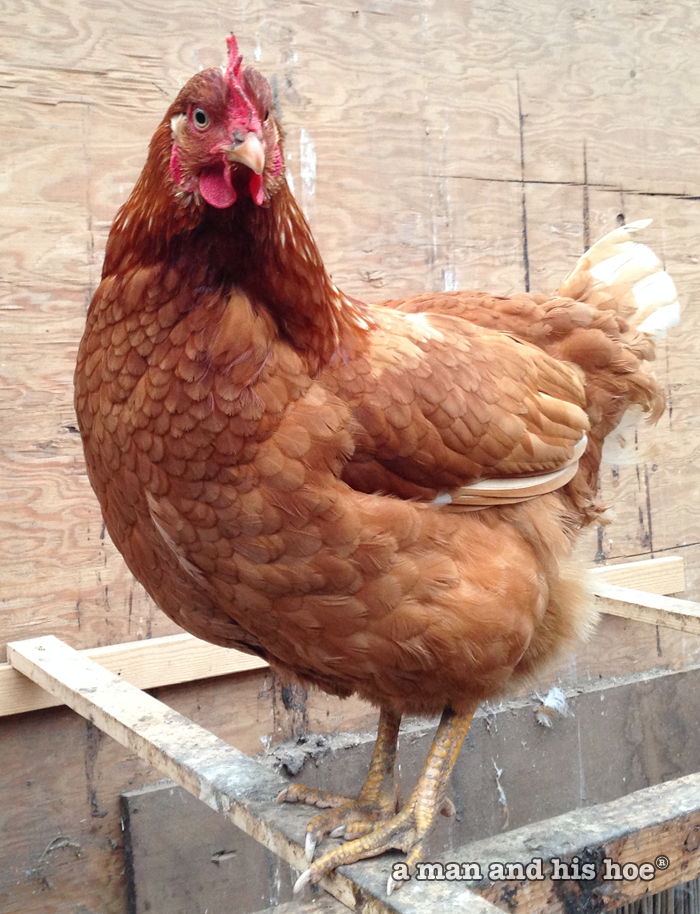
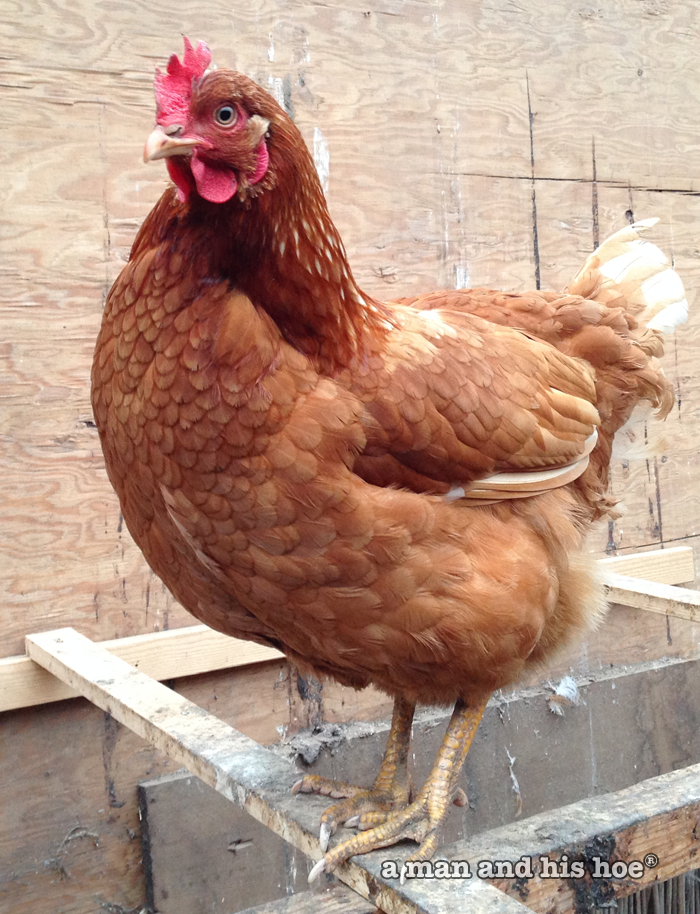
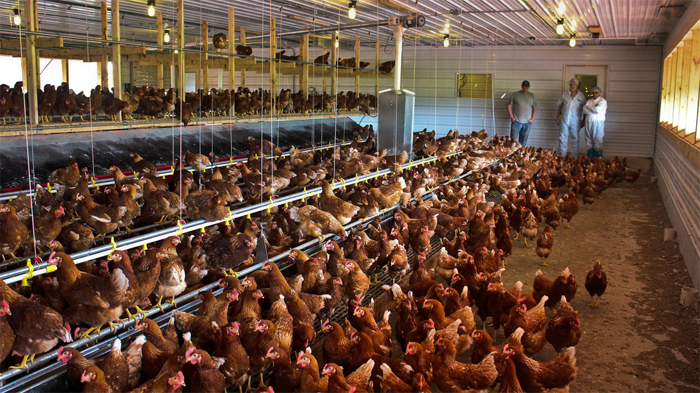 Back in 2008, the voters of California passed Proposition 2 – The Prevention of Farm Cruelty Act, which among other things, bans the use of small battery cages for chickens. The law takes effect in January 2015. Not only does the law ban the use of small battery cages in California, it also requires that all eggs sold in California meet the law’s standards. Now egg farmers in other states are suing to block the law.
Back in 2008, the voters of California passed Proposition 2 – The Prevention of Farm Cruelty Act, which among other things, bans the use of small battery cages for chickens. The law takes effect in January 2015. Not only does the law ban the use of small battery cages in California, it also requires that all eggs sold in California meet the law’s standards. Now egg farmers in other states are suing to block the law.
I believe the law is a good start, but chickens need much more room and space than even that law mandates. See NPR’s article: States Fight California’s Chicken Cage Law. But It’s Really About Bacon. -
Working Mother To Be
So what is life like for a mother-to-be hen? Most of the time, day and night, it is sitting quietly on her eggs. She is also gently turning the eggs many times a day. This keeps the embryo centered in the egg and prevents it from sticking to the shell membrane. She also protects the eggs she is sitting on and will keep other hens and predators from getting into her nest. (The squiggly lines on the eggs are ones I drew to mark the eggs she started incubating.)
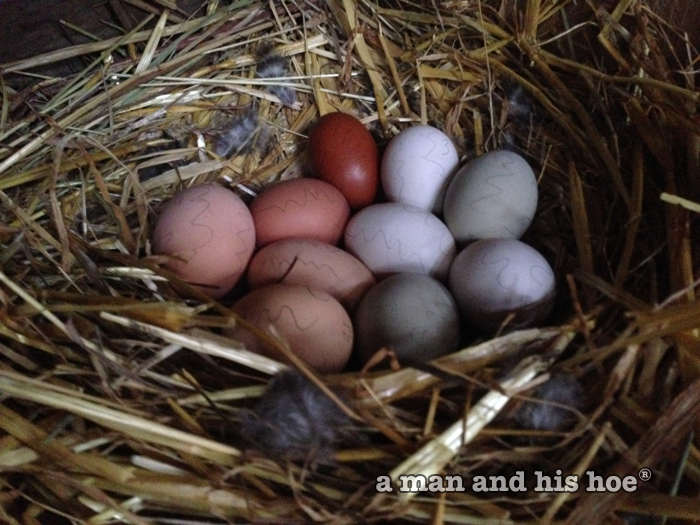 Of course, a hen doesn’t have a servant to bring her food and water. At least once a day, she has to leave the nest to eat, drink, go to the bathroom, and get some exercise.
Of course, a hen doesn’t have a servant to bring her food and water. At least once a day, she has to leave the nest to eat, drink, go to the bathroom, and get some exercise. Afterwards, she is back on her nest until the next day.
Afterwards, she is back on her nest until the next day.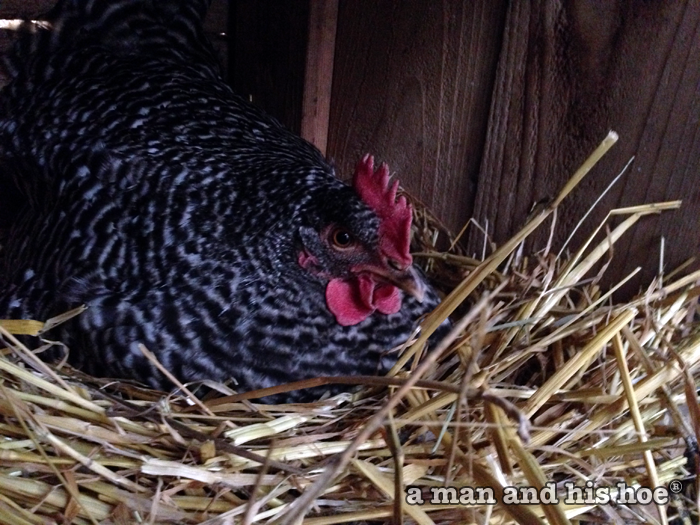
-
Laying an Egg
Chickens lay their eggs standing up. Here’s Hazel laying an egg. First, she sits quietly in the nest for ten, twenty, thirty minutes. Then when the time comes for the egg to pop out, she slowly stands and in a minute or two she drops her egg. Many hens leave the nest soon after laying their egg. Many hens also cackle loudly. I find this odd, as it alerts predators that there is a fresh egg in that spot. But the cackling seems to tell the other hens that the nest is now free, and that there is an egg there.
Hens work together to build a clutch of eggs to hatch. They don’t all want to hatch a clutch, so by working together and laying eggs in the same nest, they can more quickly go to work hatching the next generation of chicks. At least, that seems to be what is going on.
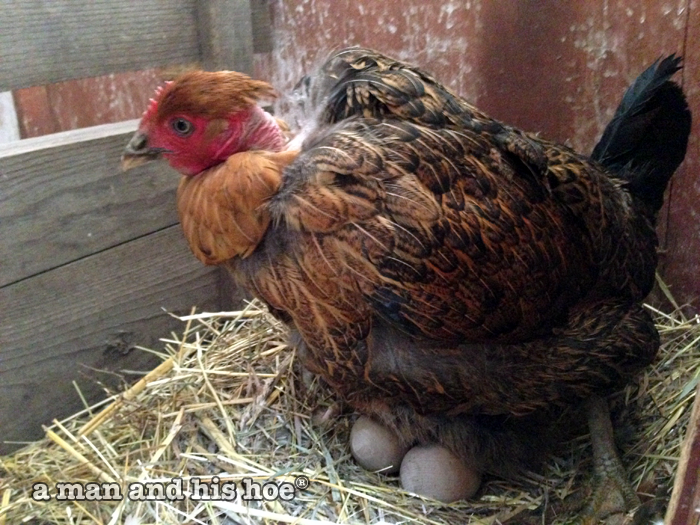
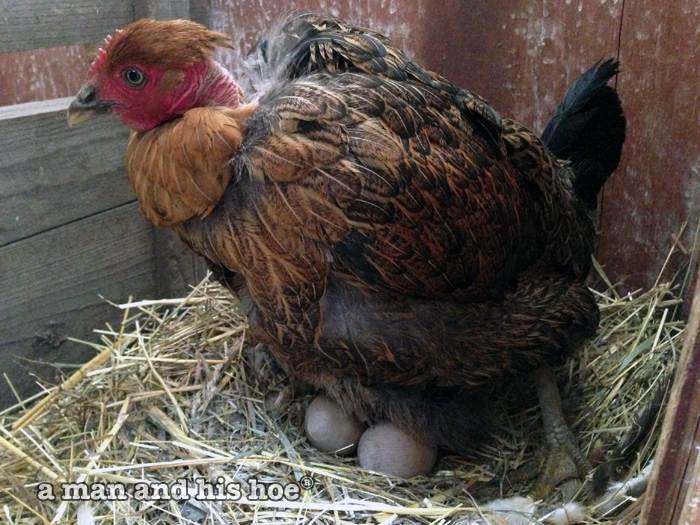


Eggs come out wet and shiny. This is called the bloom and it quickly dries, forming the cuticle, a protective barrier which keeps bacteria from entering the egg.
From Suburban Chickens:Eggs are laid with what is called a “bloom” which naturally protects it. This is the coating on the egg shell that seals its pores. Also known as the cuticle, it helps to prevent bacteria from getting inside the shell and reduces moisture loss from the egg keeping it fresher longer.
Hens usually do not start incubating their eggs until they have a clutch of 10 to 15 eggs. She wants to start incubating all the eggs at the same time so that the eggs all hatch on the same day. Therefore, eggs need to stay viable for the ten days to two weeks it takes for her to build up a clutch. Which is why, if you take a freshly egg, and put it on the counter, it will still be fresh two weeks later.
Since washing eggs damages the cuticle, making eggs more susceptible to contamination, in Europe, egg producers are not allowed to wash eggs. Even the US National Center for Biotechnology Information acknowledges this:
Egg washing is currently not permitted within the European Union, with few exceptions. This is mainly because there are concerns that cuticle damage could occur during or after the washing process, as a result of a suboptimal operation. (Effect of egg washing on the cuticle quality of brown and white table eggs.)
But you won’t find unwashed eggs in your supermarket. Chances of finding an egg with its cuticle intact in a supermarket are nil. The USDA requires all USDA graded eggs and most large volume processors to follow the washing step with a sanitizing rinse at the processing plant. In Washington state, flocks of under 3,000 hens are USDA grade exempt and fall under state law. Washington state allows the following egg cleaning methods:
- dry cleaning by lightly “sanding” the stains or minimal dirty areas with sand paper;
- using potable water in a hand spray bottle and immediately wiping dry with a single service paper towel: and/or
- briefly rinsing with running water spray and immediately wiping dry with a single service paper towel.
If you would like to get eggs with their cuticles intact, you’ll need to find a small farm which can supply you with such eggs. And if you do find small farm which can sell you eggs, be sure to get a farm that will tell you when your eggs were laid.